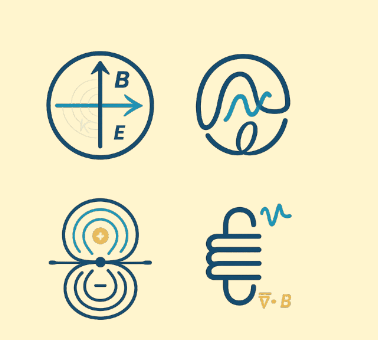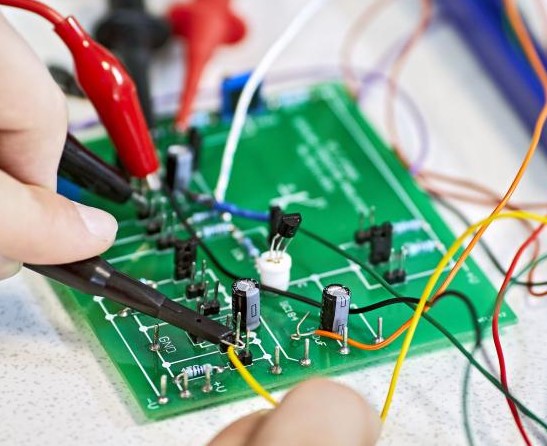
Every electrical signal, whether it's communication or high-current power transmission, generates electromagnetic fields. It's critical to comprehend how these fields are created and altered. Goals of the course
• covers the concepts of classical electrostatics, including charge and charge density in volumes, force due to charge, electric field intensity, electric potential, and electric flux density.
• investigates the concepts of magnetostatics, including magnetic flux density, magnetic forces, magnetic potential, and inductance.
• Present fields that change with time, such as displacement current, motion, transformers, and moving conductors.
• Comprehend and compute the force applied by electromagnetic
• covers the concepts of classical electrostatics, including charge and charge density in volumes, force due to charge, electric field intensity, electric potential, and electric flux density.
• investigates the concepts of magnetostatics, including magnetic flux density, magnetic forces, magnetic potential, and inductance.
• Present fields that change with time, such as displacement current, motion, transformers, and moving conductors.
• Comprehend and compute the force applied by electromagnetic
- Teacher: Sami Sharif

Course Objectives:
The aims of this course include the introduction to the principles of operation, the analysis and design of basic electronic circuits.
Learning Outcomes:
1. Understand the main principles of operation of basic electronic circuits.
2. To be familiar with the use of equivalent circuit models in the design and analysis of single stage and multi-stage amplifier circuits.
3. To be familiar with, and able to, design basic circuits containing diodes and transistors.
Understand the principles of single and multistage amplifier circuits.
Text book:
“Electronic Devices and Circuit Theory” Robert L. Boylestad and Louis Nashelsky, 10th edition, Pearson, 2009
,
The aims of this course include the introduction to the principles of operation, the analysis and design of basic electronic circuits.
Learning Outcomes:
1. Understand the main principles of operation of basic electronic circuits.
2. To be familiar with the use of equivalent circuit models in the design and analysis of single stage and multi-stage amplifier circuits.
3. To be familiar with, and able to, design basic circuits containing diodes and transistors.
Understand the principles of single and multistage amplifier circuits.
Text book:
“Electronic Devices and Circuit Theory” Robert L. Boylestad and Louis Nashelsky, 10th edition, Pearson, 2009
,
- Teacher: Hesham Dafalla
Laplace transform and application to circuit analysis. Two port Networks analysis, Singular functions; Laplace transform; network functions, poles and zeros; total response; time and frequency domain; convolution theorems. Mutual inductance and transformers. Laplace transform and its applications. Transfer function. Multi-port network. Bode plots. Three phase networks analysis,
- Teacher: Kamal Ramdan